By Denise Mattia
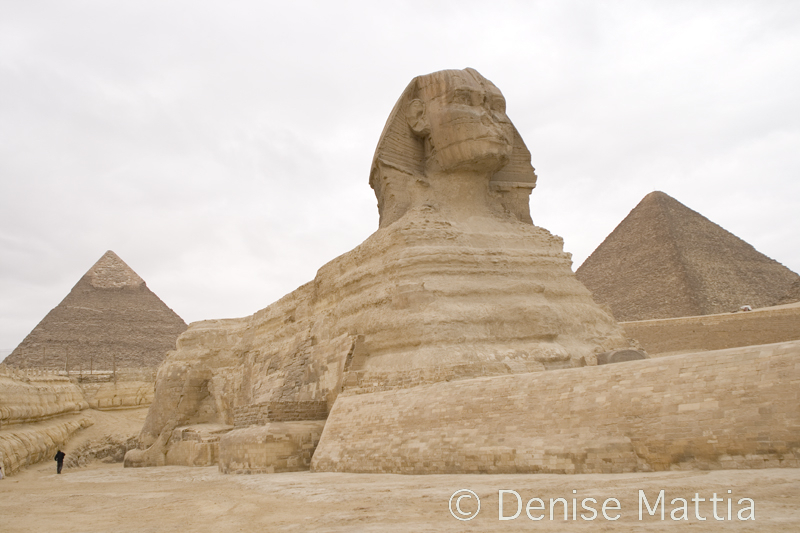 It’s impossible not to gaze again and again in wonderment at the Great Pyramids, the Sphinx at Giza, the tombs of Nefetari and Ramesses I, the colossal statues of the Pharaohs, and the temples at Luxor, Aswan and Abu Simbal. With all this splendor few visitors realize the importance the Nile River played in the development of these great monuments.
It’s impossible not to gaze again and again in wonderment at the Great Pyramids, the Sphinx at Giza, the tombs of Nefetari and Ramesses I, the colossal statues of the Pharaohs, and the temples at Luxor, Aswan and Abu Simbal. With all this splendor few visitors realize the importance the Nile River played in the development of these great monuments. 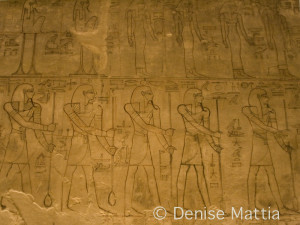
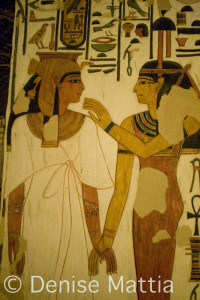 According to researchers, the wild rushes, papyrus, lotus and reeds, even the river’s clay, were responsible for early architecture and sculpture in Egypt. Periodic inundation of the Nile dictated the location of settlements along the riverbanks. The navigable water (the Nile is the only river in the world that flows from south to north) allowed for easy transportation of materials and interchanges of ideas, which inspired architects to achieve perfection in construction.
According to researchers, the wild rushes, papyrus, lotus and reeds, even the river’s clay, were responsible for early architecture and sculpture in Egypt. Periodic inundation of the Nile dictated the location of settlements along the riverbanks. The navigable water (the Nile is the only river in the world that flows from south to north) allowed for easy transportation of materials and interchanges of ideas, which inspired architects to achieve perfection in construction.
Prior to the middle of the First Dynasty (the Predynastic Period, approximately 5,000 years ago) mud brick was the common material used for large buildings. Gradually, religious concepts took form in art, with stone and molded clay sculptures depicting human, animal, plant and fetish forms. Few structures, however, survived.
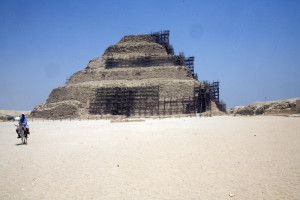 Over the last two centuries, archaeologists unearthed limestone tombs that were built earlier than 2630 BCE, the date given to the Step Pyramid of King Djoser at Sakkara, where visible on walls, lintels and sills are depictions of fluted and ribbed vaults and bundles of reeds bent into arches – iconic symbols for the king to reign in the other world. Under the design of master architect Imhotep, the Step Pyramid became the prototype for the monumental royal tombs through the 6th Dynasties (2135 BCE).
Over the last two centuries, archaeologists unearthed limestone tombs that were built earlier than 2630 BCE, the date given to the Step Pyramid of King Djoser at Sakkara, where visible on walls, lintels and sills are depictions of fluted and ribbed vaults and bundles of reeds bent into arches – iconic symbols for the king to reign in the other world. Under the design of master architect Imhotep, the Step Pyramid became the prototype for the monumental royal tombs through the 6th Dynasties (2135 BCE).
 Today, the Nile continues to be the lifeblood of Egypt. Visitors follow its path from Cairo to Luxor, often joining a cruise to tour the monuments at Idfu, Kom Ombo and Aswan and continuing south to Abu Simbal. “We have professionally guided excursions throughout Egypt,” said Mr. Hisham Zaazou, Minister of Tourism, “and visitors can take advantage of lower airfares and fewer crowds at historical sites,” adding, “the time to enjoy all we have to offer is now.”
Today, the Nile continues to be the lifeblood of Egypt. Visitors follow its path from Cairo to Luxor, often joining a cruise to tour the monuments at Idfu, Kom Ombo and Aswan and continuing south to Abu Simbal. “We have professionally guided excursions throughout Egypt,” said Mr. Hisham Zaazou, Minister of Tourism, “and visitors can take advantage of lower airfares and fewer crowds at historical sites,” adding, “the time to enjoy all we have to offer is now.”
During my third visit to the country I visited the construction site of the new Grand Egyptian Museum and spoke with the museum’s General Director, Dr. Tarek Sayed Tawfik, who maintained that entrance fees contribute in part to maintaining and safeguarding the world’s inherited sites. Thousands of artifacts and statues will be on display when the Museum building is completed, the soft opening of which is projected for 2018. (The major archaeological sites and museums across Egypt have been installed with high-tech cameras connected to TV circuits. While at Luxor, I was able to see first hand what they’re capable of.)
Boasting a full view of the Great Pyramids of Giza the Mena House Hotel, formerly a hunting lodge built by King Isma’il Pasha in 1869, was sold to an English couple in 1886, converted to a hotel with a swimming pool (Egypt’s first) and renamed after King Menes of the first dynasty. Today, surrounded by 40 acres of green gardens, stunning rooms overlook the Great Pyramids and the banquet and conference center, which offer venues for weddings, receptions and meetings from 50 to 1000 guests.
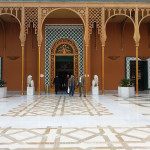 In addition to ancient kingdoms, the Nile entices visitors to the splendor of a more present nature such as the Cairo Marriott Hotel & Omar Khayyam Casino. Situated on Gezira Island in the Nile, the Palace was built for the Khedive Isma’il Pasha in 1869 to host dignitaries for the Suez Canal inauguration. It underwent several changes in its history before transitioning to a hotel and the Marriott International. After the completion of a massive renovation in 2010, much of the palace was restored to its historic splendor and serves today as reception rooms and lounges. The Marriott boasts 19 meeting rooms with a maximum capacity space in the Aida room of 1,000, and is an ideal setting for meeting and incentive groups, special events and weddings. Luxury rooms and suites are located in the two, 20-story towers.
In addition to ancient kingdoms, the Nile entices visitors to the splendor of a more present nature such as the Cairo Marriott Hotel & Omar Khayyam Casino. Situated on Gezira Island in the Nile, the Palace was built for the Khedive Isma’il Pasha in 1869 to host dignitaries for the Suez Canal inauguration. It underwent several changes in its history before transitioning to a hotel and the Marriott International. After the completion of a massive renovation in 2010, much of the palace was restored to its historic splendor and serves today as reception rooms and lounges. The Marriott boasts 19 meeting rooms with a maximum capacity space in the Aida room of 1,000, and is an ideal setting for meeting and incentive groups, special events and weddings. Luxury rooms and suites are located in the two, 20-story towers.
The golden tower on the southern tip on the banks of the island is the elegant Sofitel El Gezira. The 433-room luxury hotel offers stunning views of Cairo and has five restaurants. Two amazing massages at the full-service spa there made me feel like an Egyptian queen.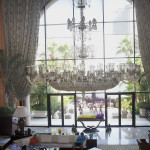

I extended my Sofitel experience while in Egypt by staying on the banks of the Nile at the historic Sofitel Winter Palace, located minutes from the Luxor Temple and close to the Valley of the Kings. Built in 1886, the Palace blends colonial architecture with Pharaonic design, and has been home to royalties and celebs since its inception. Scheduled for this summer is a $3 million renovation project.
Following the Nile to Luxor and Edfu, I also stayed at the Sofitel Old Cataract Aswan, where Agatha Christie enjoyed her daily G&T (gin and tonic) with friends on the rose granite Promenade and then dined in the 1902  restaurant. Recently, French designers have positioned bars along the Promenade, kept up the restaurant’s Victorian opulence and blended old world elegance with modern conveniences in the guest rooms. The Old Cataract is a well-protected, enclosed property in the heart of the Nile and is ideal for business meetings and conventions.
restaurant. Recently, French designers have positioned bars along the Promenade, kept up the restaurant’s Victorian opulence and blended old world elegance with modern conveniences in the guest rooms. The Old Cataract is a well-protected, enclosed property in the heart of the Nile and is ideal for business meetings and conventions.
As with my first visit, I was enriched on the second and third visits at seeing the magnificence of the monuments and formed a deeper appreciation of how nature determines creativity. In the fifth century BCE the Greek historian Herodotus described Egypt as a “gift of the river.” The country is a gift to all who go there.
For more images of Egypt click on the Photo Galleria .
About Denise Mattia
A writer and photographer, Denise Mattia’s works are published nationally and internationally and include all aspects of leisure travel: art , culture, resorts, spas, food and wine and sports’ activities. She's the founder of the soon to be launched Yum-Yum-Traveler, a site devoted to reviewing restaurants in addition to her travel articles from around the world. She lives and works in Manhattan, where she was born.
- Web |
- More Posts (91)
